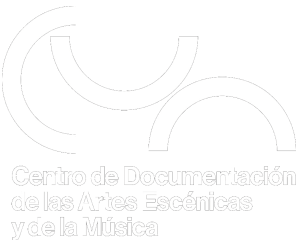Harpsichords and spinets in late Baroque Rome (Registro nro. 123010)
[ vista simple ]
| 000 -LEADER | |
|---|---|
| fixed length control field | 02616nab a2200181 c 4500 |
| 001 - CONTROL NUMBER | |
| control field | myd_86590 |
| 003 - CONTROL NUMBER IDENTIFIER | |
| control field | ES-MaCDM |
| 005 - DATE AND TIME OF LATEST TRANSACTION | |
| control field | 20240917124642.0 |
| 008 - FIXED-LENGTH DATA ELEMENTS--GENERAL INFORMATION | |
| fixed length control field | 181003s2012 sp ||||fr 00| u|spa u |
| 040 ## - CATALOGING SOURCE | |
| Original cataloging agency | ES-MaCDM |
| 100 1# - MAIN ENTRY--PERSONAL NAME | |
| Personal name | Barbieri, Patrizio |
| 9 (RLIN) | 134773 |
| 245 0# - TITLE STATEMENT | |
| Title | Harpsichords and spinets in late Baroque Rome |
| Statement of responsibility, etc | BARBIERI, Patrizio |
| 260 ## - PUBLICATION, DISTRIBUTION, ETC. (IMPRINT) | |
| Date of publication, distribution, etc | 2012: |
| Name of publisher, distributor, etc | Oxford University Press, |
| Place of publication, distribution, etc | London; Oxford |
| 520 ## - SUMMARY, ETC. | |
| Summary, etc | RESUMEN: This study of harpsichords, spinets, spinettini, spinettoni, arpicordi, cembali pliegatori and sordini in late Baroque Rome includes new technical and historical information drawn from the inventories of goods of harpsichord- makers and of private houses, mainly palaces of the nobility, preserved in Rome´s archives. Although the standerd Italian harpsichords had only two registers, three- register instruments were not uncommon in Rome: in addition to those we already knew about, 40 further instruments can be listed, beginning with one built in 1621 by Giovanni Battista Boni Cortona. to date the firt known to have been made in the Eternal City; some even had 16´ registers. Concerning the three- register piano and forte harpsichord´ played by Bernardo Pasquini in the Palazzo Borghese´s accademie, new documentd attribute its invention to Iacopo Ramerini (before 1647), as well as suggesting two ways of using the piano and forte in Roman musical performance. Furthermore, six four-register instruments have come to light, one a very rare two- manual by Cortona. There is fresh evidence of two or three manual harpsichords which could be played on two side or on three sides, respectively. There are also three mentions of two manual spinets, possibly similar to those (recently discovered) made by Girolamo Zenti and his pupil Giovanni Battista Giusti, which have in addition to a 4´ upper keyboard, a lower one which could provide both 8´ + 4´or, if shifted, only 8´. New documents confirmtaht the term spinettone was not limited to Zenti´s large bentside spinets (spinette traverse), but also included any large- sized spinetta or aopicordo. Finally, a 1713 inventory mentions a cembalo da campagna piegatore, the first mention of a folding harpsichord for the country´ in Italy, though unfortunately does not specify if it was French or one of those made in Rome by Giuseppe Mondini. Keywords: harpsichord. spinet, keyboard instruments, Girolamo Zenti, Giovanni Battista Giusti, Giuseppe Mondini, Bernardo Pasquini, Rome Baroque. |
| 773 0# - HOST ITEM ENTRY | |
| Title | Early Music |
| Host Biblionumber | 72886 |
| Record control number | myd_16029 |
| Relationship information | Vol. 40, núm. 1,Feb. 2012, p. 55 |
| 903 ## - LOCAL DATA ELEMENT C, LDC (RLIN) | |
| a | 86590 |
| b | 86590 |
| 942 ## - ADDED ENTRY ELEMENTS (KOHA) | |
| Koha item type | Artículos de revista |
No hay ítems disponibles.

